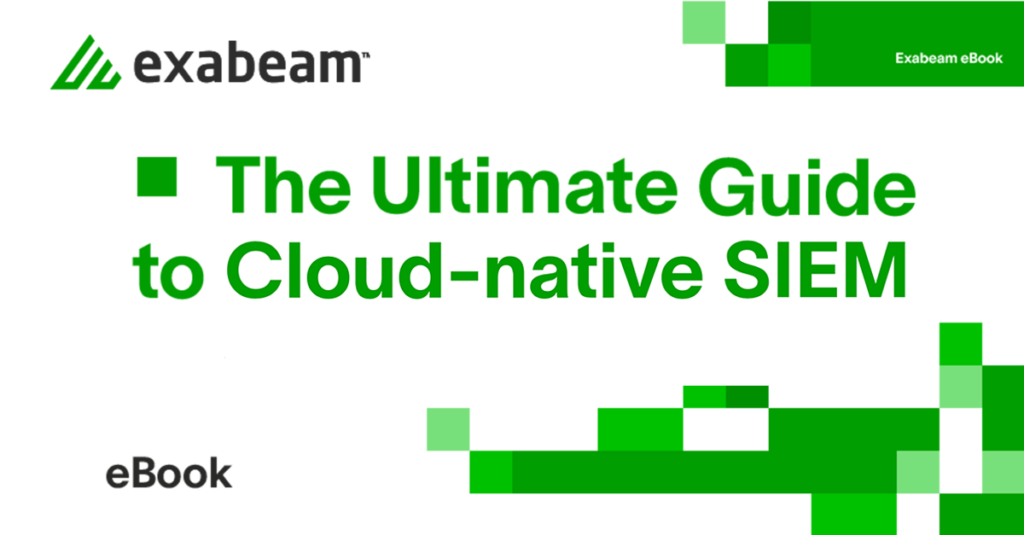In the first post of this series, we explored how cloud-native security information and event management (SIEM) can transform and simplify security operations. In this second installment, we’ll take a closer look at the differences between traditional and cloud-native SIEM solutions, examining the pros and cons of each to help you make an informed decision about which option is best suited for your organization’s needs.
In this article:
- Legacy SIEM and its benefits
- Cloud-native SIEM and its benefits
- Potential drawbacks of legacy SIEM solutions
- Potential drawbacks of cloud-native SIEM solutions
- Factors to consider when choosing between legacy and cloud-native SIEM
- Conclusion
Legacy SIEM and its benefits
First-generation SIEM solutions became available in the 1990s as a response to the growing need for a centralized platform that could collect, analyze, and correlate security events from various sources across an organization’s network, and to meet security compliance requirements. These solutions typically consist of a combination of hardware and software components, which are deployed on-premises within an organization’s data center.
The benefits of legacy SIEM include:
- Centralized log management — Legacy SIEM solutions enable organizations to collect and store logs from a wide range of sources, providing a centralized platform for log management, security event management, and analysis.
- Correlation and alerting — By correlating events from different sources, legacy SIEM systems can identify patterns that may indicate a security incident, triggering alerts for further investigation.
- Compliance reporting — Legacy SIEM solutions often include built-in reporting capabilities that help organizations meet various regulatory and compliance requirements.
Cloud-native SIEM and its benefits
Cloud-native SIEM solutions have emerged as a response to the limitations of legacy SIEM and the growing need for a more scalable, flexible approach to security operations. These solutions are built on cloud-native architectures and leverage cloud infrastructure and services to deliver advanced security analytics and threat detection capabilities.
Some of the benefits of cloud-native SIEM are:
- Scalability and flexibility — Cloud-native SIEM solutions can easily scale up or down to accommodate changing workloads and data volumes, providing a more cost-effective and agile approach to SIEM.
- Rapid deployment — With cloud-native SIEM, organizations can quickly deploy and configure their SIEM solution without the need for expensive hardware or lengthy implementation processes — including bringing in new, previously-unsupported security log sources.
- Reduced management overhead — Business transformation has pushed many IT functions to the cloud, and cloud-native SIEM is leading the way. IT teams don’t need to load yet another appliance in the data center, and can offload much of the hourly maintenance.
- Better threat detection, investigation, and response (TDIR) — Cloud-native SIEM solutions often incorporate advanced technologies like artificial intelligence (AI), machine learning (ML), and user and entity behavior analytics (UEBA), which can significantly improve TDIR capabilities.
Potential drawbacks of legacy SIEM solutions
While legacy SIEM solutions have their advantages, they also come with several drawbacks that can limit their effectiveness in addressing modern cybersecurity challenges, including:
- Limited scalability — Legacy SIEM solutions often struggle to scale with growing data volumes and workloads, leading to performance bottlenecks and increased costs.
- High total cost of ownership — Deploying and maintaining a legacy SIEM solution can be expensive, as it often requires substantial investments in hardware, software, and skilled personnel.
- Difficulty adapting to new threats — Legacy SIEM solutions can be slow to adapt to new and emerging threats, as they typically rely on predefined rules and signatures, which may not be sufficient to detect advanced threats.
Potential drawbacks of cloud-native SIEM solutions
While cloud-native SIEM solutions offer numerous advantages over their traditional counterparts, they also come with some potential drawbacks that organizations should consider before making the switch, including:
- Data privacy and security concerns — Storing sensitive security data in the cloud can raise concerns about data privacy and security. Organizations should carefully evaluate the security posture of their chosen cloud provider and ensure that proper encryption, access control, and monitoring measures are in place.
- Potential vendor lock-in — With cloud-native SIEM solutions, there’s a risk of organizations becoming heavily reliant on a single cloud provider’s infrastructure and services. This can make it difficult to switch providers or migrate back to an on-premises solution if needed.
- Integration with existing systems — While cloud-native SIEM solutions are designed for seamless integration with cloud-based infrastructure and services, organizations may face challenges when integrating these solutions with their existing on-premises systems and tools.
Factors to consider when choosing between legacy and cloud-native SIEM
When weighing the pros and cons of legacy and cloud-native SIEM solutions, organizations should consider several factors to determine which option best meets their needs. Among them are:
- Data volume and scalability requirements — If your organization handles large volumes of data or anticipates significant growth, a cloud-native SIEM solution may be better suited to handle these demands.
- Compliance and regulatory requirements — Both legacy and cloud-native SIEM solutions can help organizations meet compliance requirements, but your specific needs may dictate which approach is more suitable. For example, some organizations may be subject to strict data residency requirements that make storing security data in the cloud impractical.
- Existing infrastructure and investment — If your organization has already invested heavily in on-premises security infrastructure, it may be more cost-effective to continue with a traditional SIEM solution. However, if you’re starting from scratch or looking to modernize your security operations, a cloud-native SIEM solution may be a more attractive option.
- Security expertise and resources — Cloud-native SIEM solutions can help alleviate the burden on IT teams by simplifying deployment and management. However, organizations should still have in-house security expertise to effectively leverage these tools and ensure proper configuration and monitoring.
Conclusion
Legacy and cloud-native SIEM solutions each have their own set of pros and cons. The decision ultimately comes down to your organization’s specific needs, resources, and priorities. By carefully considering these factors, you can choose the SIEM solution that best supports your security operations and helps protect your organization against modern cyberthreats.
Stay tuned for the next post of this series, where we’ll explore best practices for implementing and optimizing a cloud-native SIEM solution, and provide actionable guidance to help you get the most out of your investment. Subscribe to the Exabeam blog for updates!
To learn more, read The Ultimate Guide to Cloud-native SIEM
Transition SIEM to the cloud
Today’s security teams face increasing challenges in managing and responding to threats effectively. Cloud-native SIEM presents a powerful solution to simplify and streamline your security operations. Download our comprehensive eBook to uncover how this technology can transform your organization’s security posture.
You’ll gain insights into:
- The evolution of SIEM and the emergence of cloud-native SIEM
- The advantages and potential drawbacks of cloud-native SIEM versus traditional SIEM
- Various hosting models for cloud-native SIEM solutions
- Real-world use cases for cloud-native SIEM deployments
- A step-by-step guide for migrating from an on-premises to cloud-native SIEM
Transitioning to cloud-native SIEM can be a game changer for your security operations. Don’t miss this opportunity to stay ahead of emerging threats and defend your organization’s critical data with greater efficiency and ease.

Similar Posts
Recent Posts
Stay Informed
Subscribe today and we'll send our latest blog posts right to your inbox, so you can stay ahead of the cybercriminals and defend your organization.
See a world-class SIEM solution in action
Most reported breaches involved lost or stolen credentials. How can you keep pace?
Exabeam delivers SOC teams industry-leading analytics, patented anomaly detection, and Smart Timelines to help teams pinpoint the actions that lead to exploits.
Whether you need a SIEM replacement, a legacy SIEM modernization with XDR, Exabeam offers advanced, modular, and cloud-delivered TDIR.
Get a demo today!













